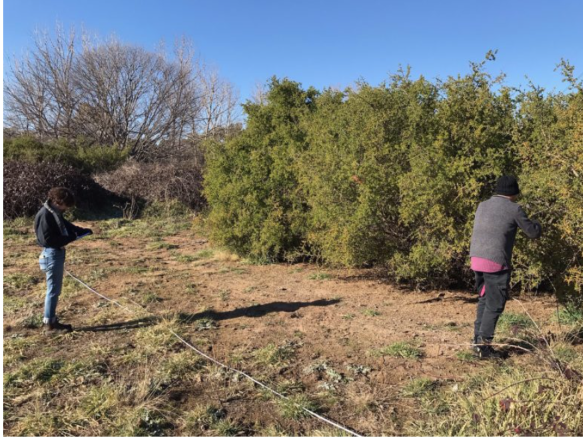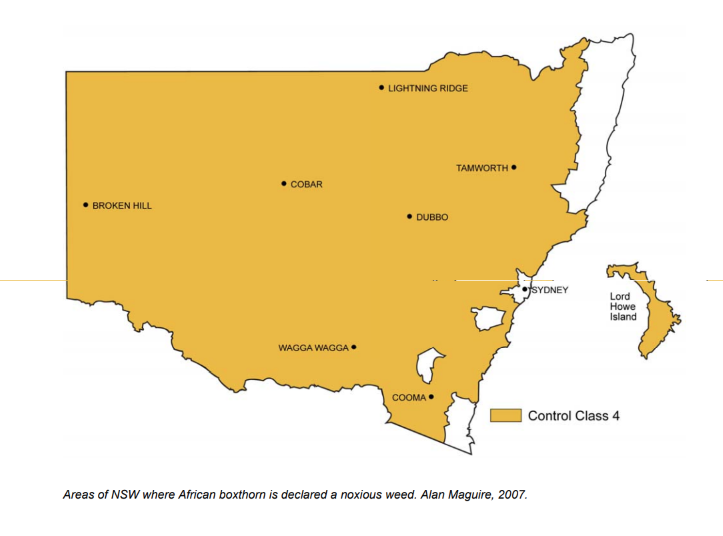Biocontrol the latest weapon against boxthorn. How you can help.
Kristin Murdock
14 May 2024, 3:40 AM
 The CSIRO are calling for landholders to get involved in battling the boxthorn infestation.
The CSIRO are calling for landholders to get involved in battling the boxthorn infestation.What was originally introduced as a hedge plant from South Africa is now a serious weed threat which covers the majority of New South Wales.
The African Boxthorn is a nightmare weed to control due to its establishment as dense, impenetrable and thorny thickets, its prevalence across a broad range of landscapes and continued spread.
The CSIRO say it is one of the major weed threats to the semi-arid rangelands of western NSW and a declared noxious weed in most parts of NSW (see map).
Landholders continually work closely with groups such as the Western Local Land Services to battle the weed. In 2023, around 25 landholders were contracted to carry out control works for African boxthorn, mesquite and cactus, using a variety of control methods suitable for local conditions.
“One landholder is getting good results using granular herbicide applied at the base of boxthorn plants,” Senior Land Services Officer, Andrea Cashmere said at the time. “This method is the most time efficient and effective for them because the plants are scattered over a large open grassland. Opportunistic control is also undertaken while mustering sheep.”
But, the battle continues!

Setting-up a site for monitoring the impact of the biocontrol agent on African boxthorn. IMAGE: CSIRO
Biocontrol is the latest tool to be used to control the weed with a CSIRO led project to introduce a rust fungus, Puccinia rapipes, that infects the leaves of African boxthorn. Carried out through Local Land Services, the project is looking for volunteers to get involved.
The fungus was isolated from diseased boxthorn plants in South Africa, and through extensive host-specificity studies undertaken by the CSIRO, was shown to be highly specific to African boxthorn and poses no danger to native Australian vegetation.
In 2021, the fungus was approved for release into the Australian environment as a biocontrol agent to assist with the control of African boxthorn.
The rust fungus infects young leaves which cause yellowing, followed by the development of pustules. The pustules produce fungal spores dispersed by wind, landing on nearby Boxthorn and under humid conditions they will germinate.

In the Australian environment, the fungus is not expected to kill African boxthorn. Provided that the biocontrol agent is established widely and causes severe disease symptoms on African Boxthorn, it is expected to reduce the productive output and growth of the weed in the long term. This will in turn reduce its invasion potential in various ecosystems but will not eradicate it altogether.
CSIRO have already completed one trial and their aim now is to set up a second trial. CSIRO scientists believe if they can get enough landholders involved across NSW it will help reduce the population and spread of boxthorn.
If you would like to get involved in the second trial, CSIRO will provide registered participants with a biocontrol agent release kit. Each kit contains a vial of the rust fungus spores, along with step-by-step instructions and material to apply the spores to the target African boxthorn plant. The kits will contain enough material to spray 8 or more boxthorn branches.
The project will continue until 2026
Read more about the project and how to register your interest to participate.



